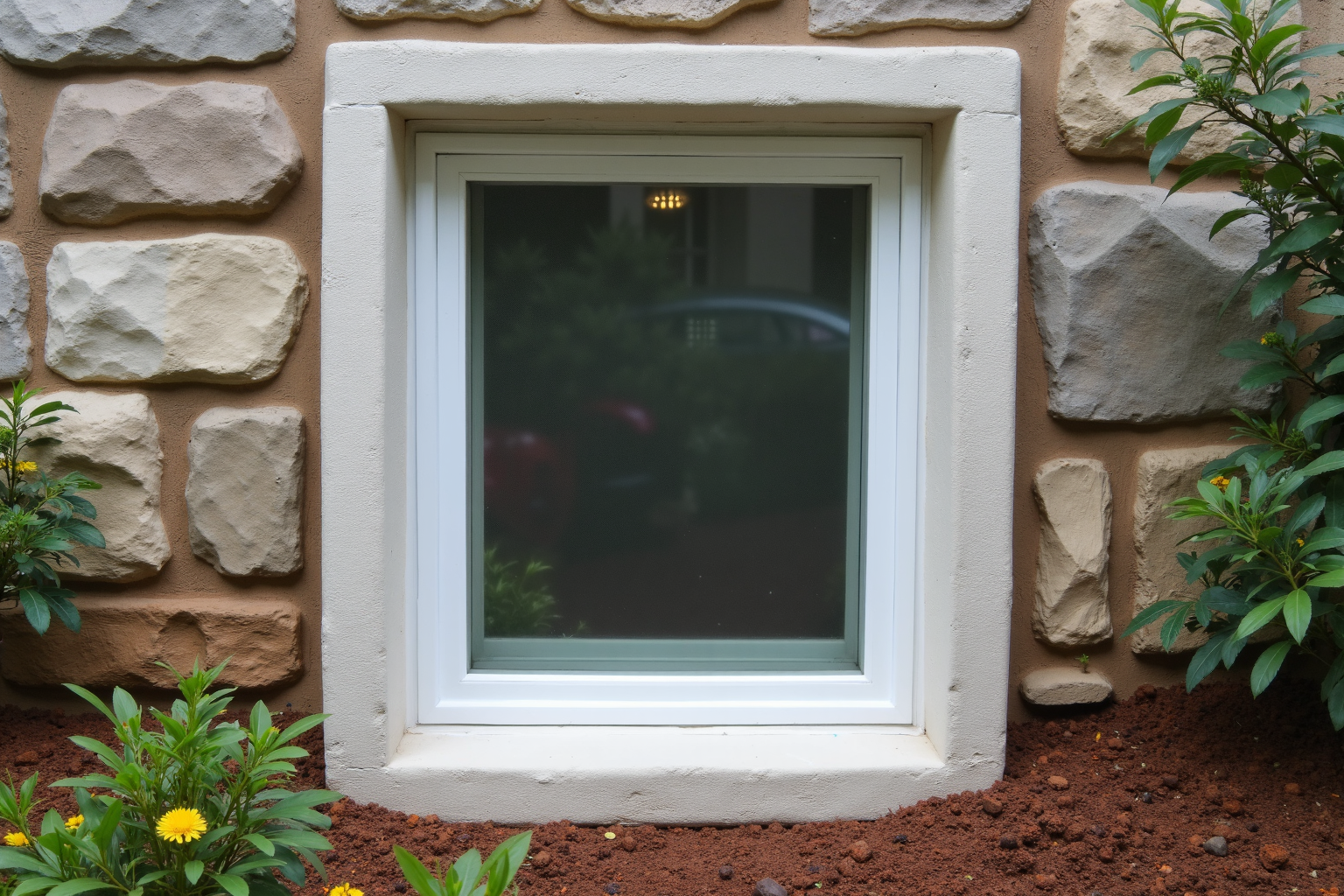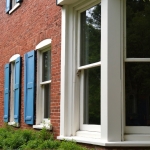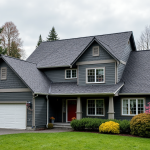Choosing the Right Basement Window Wells: A Comprehensive Guide to Materials, Design, and Safety
Introduction: The Importance of Choosing the Right Basement Window Well
Basement window wells are much more than simple holes in the ground; they are crucial components of a functional and safe basement. They serve as vital conduits for natural light, transforming a dark, damp space into a bright, inviting area. Properly installed window wells also play a critical role in protecting your foundation by effectively managing water drainage and preventing hydrostatic pressure buildup against basement walls. Choosing the right window well is a decision that impacts both the aesthetics and structural integrity of your home, making it a key consideration for any basement project, whether you’re finishing the space, adding an egress window, or simply improving functionality. For homeowners undertaking DIY basement remodeling, understanding the nuances of window well selection is particularly important. This comprehensive guide will equip you with the knowledge to make informed decisions, ensuring your basement window well project enhances your home’s value, safety, and comfort. Imagine transforming your dimly lit basement into a vibrant living space simply by maximizing natural light with a properly sized window well. This not only improves the aesthetics but also increases the usability of the basement, making it a more welcoming environment for family and guests. Consider the peace of mind that comes with knowing your foundation is protected from water damage thanks to a well-designed and installed window well. Furthermore, in the event of an emergency, a properly sized egress window well can be a life-saver, providing a safe and accessible escape route. From a construction standpoint, the choice of materials and installation techniques directly impacts the longevity and effectiveness of the window well. For example, opting for galvanized steel offers durability, while plastic provides a lightweight and cost-effective solution. Understanding these trade-offs is essential for both DIY enthusiasts and contractors. This guide delves into the various aspects of selecting and installing basement window wells, covering materials, design considerations, safety features, and installation best practices. Whether you’re a seasoned contractor or a homeowner embarking on a DIY basement renovation, this information will empower you to make the right choices for your project, ensuring a safe, functional, and aesthetically pleasing outcome. From choosing the right size for optimal light entry to understanding local building codes for egress windows, we’ll cover everything you need to know to make your basement window well project a success.
Material Options: Steel, Plastic, and Concrete
The material of your basement window well significantly impacts its durability, cost, lifespan, and overall aesthetic appeal. Choosing the right material is crucial for balancing functionality, budget, and the long-term performance of your basement window well installation. Here’s a comprehensive breakdown of common window well material options to help you make an informed decision: Galvanized steel remains a popular choice for basement window wells due to its strength, affordability, and ready availability at most home improvement stores. A durable and cost-effective option, galvanized steel provides excellent protection against impacts and the pressures of surrounding soil. However, steel can rust over time, especially in areas with persistent moisture or poorly managed window well drainage. Regular maintenance, including cleaning and repainting, can extend the lifespan of a steel window well. For homeowners in DIY mode, steel is relatively easy to work with, making it suitable for weekend projects. Plastic, typically high-density polyethylene (HDPE), has become increasingly popular for its lightweight nature, rust-proof properties, and ease of installation. Plastic window wells are significantly lighter than steel or concrete, simplifying the installation process, especially for DIY enthusiasts. The rust-proof characteristic of plastic makes it an ideal choice for regions with high moisture or corrosive soil conditions. While generally durable, plastic window wells can be susceptible to cracking under extreme pressure from heavy soil or significant temperature fluctuations. For deeper window wells or areas with substantial soil pressure, consider reinforcing the plastic with additional supports. Concrete window wells offer unparalleled strength, durability, and longevity, making them suitable for larger projects or homes built on challenging terrain. Concrete provides excellent structural support, resisting the immense pressures exerted by heavy or expansive soils. A properly installed and sealed concrete window well can last for decades, requiring minimal maintenance. However, concrete is the most expensive option and requires professional handling due to its weight and the specific skills needed for proper installation. Concrete window wells are also more susceptible to water issues if not properly sealed during window well installation. When selecting a material, consider your budget, local climate, soil conditions, and the overall design of your home. If you live in a wet climate or have heavy clay soil, plastic or concrete offers better protection against rust and water damage. For homes with expansive soils, concrete might be the preferred choice due to its superior structural integrity. If budget is a primary concern and you’re comfortable with periodic maintenance, galvanized steel can be a cost-effective solution. Finally, don’t forget to factor in the aesthetic aspect. While functionality is paramount, you’ll want a window well that complements your home’s exterior. Consider factors such as color, texture, and the availability of decorative options to enhance the curb appeal of your home. Ensuring proper window well drainage is critical regardless of the material chosen. A well-designed drainage system will prevent water accumulation around the window, protecting your foundation and preventing basement flooding. Incorporating a layer of gravel at the base of the well, combined with a properly sloped excavation, promotes efficient water runoff. Additionally, consider installing a window well cover to prevent debris, leaves, and pests from entering the well and clogging the drainage system. Egress windows and their corresponding wells are essential safety features in basement remodeling projects. If your basement includes living spaces, ensure your chosen window well meets local building codes for egress window requirements. These codes specify minimum dimensions for the window and well opening to allow for safe escape in emergencies. Properly sized egress windows and wells provide peace of mind and enhance the overall safety of your home. Remember, choosing the right basement window well involves careful consideration of various factors, including material, design, and safety features. By understanding the pros and cons of each material and considering your specific needs, you can create a functional, safe, and aesthetically pleasing basement space that enhances the value and enjoyment of your home.
Design Considerations: Drainage and Light Entry
Optimizing basement window well design is paramount for maximizing natural light, ensuring efficient drainage, and guaranteeing safe egress. Careful consideration of size, shape, depth, drainage solutions, and light entry enhancement techniques will contribute to a functional and aesthetically pleasing basement upgrade. Accurately sizing your window well involves more than just fitting the window. For standard basement windows, the well should extend at least 6 inches beyond the window frame on all sides, allowing ample space for cleaning and maintenance. Egress window wells, crucial for basement bedrooms or living areas, must adhere to specific building codes, often requiring a minimum width and projection area to allow safe exit. Consult your local building codes for precise dimensions and requirements. The shape of the window well significantly impacts functionality and aesthetics. Rectangular wells are generally preferred for egress windows due to their maximized open area for escape. Semi-circular or curved wells, while often more visually appealing, can restrict egress space and may not be code-compliant for emergency exits. The choice depends on the window’s purpose and your local regulations. Proper depth is crucial for both drainage and structural integrity. The base of the window well should sit below the window’s sill, preventing water from seeping into the basement. In regions with heavy clay soil or high water tables, deeper wells, potentially incorporating drainage systems, become essential to redirect water away from the foundation. This safeguards against hydrostatic pressure buildup, which can cause cracks and other structural damage. Consult with a foundation specialist if you have concerns about soil conditions or drainage capacity. Effective drainage is the cornerstone of a well-designed window well. A layer of gravel, typically 4-6 inches deep, at the base of the well promotes water percolation and prevents mud buildup. In areas prone to excessive moisture, connecting the well to a French drain or installing a sump pump system can prevent water accumulation and protect your basement from flooding. Sloping the gravel base away from the house further ensures efficient water runoff. Maximizing natural light entry involves strategic design choices. Wider wells naturally capture more light. Opting for light-colored well materials, such as white or beige plastic, further enhances light reflection into the basement. Consider the window’s orientation relative to the sun’s path. South-facing windows generally receive the most sunlight, while north-facing windows benefit from lighter-colored well materials to maximize available light. Incorporating window well covers not only enhances safety but also contributes to energy efficiency by insulating the well opening and reducing heat loss during colder months. Choose covers that allow for adequate ventilation to prevent moisture buildup and ensure proper airflow. Clear or translucent covers maximize light transmission while protecting the well from debris and pests. Remember to check local building codes for specific requirements regarding window well covers, especially for egress windows. Proper installation and maintenance are key to the longevity and performance of your window wells. Ensure the well is properly secured and backfilled to prevent shifting and settling. Regularly inspect and clean the well, removing debris and ensuring proper drainage. By addressing these design considerations, you can create window wells that are both functional and aesthetically pleasing, enhancing the comfort and safety of your basement space.
Safety Features: Egress, Covers, and Building Codes
Safety should be the foremost consideration when selecting and installing basement window wells. A properly chosen and installed window well not only enhances the aesthetics and functionality of your basement but also safeguards your family and protects your home from potential hazards. Overlooking safety aspects can lead to accidents, water damage, and costly repairs down the line. Therefore, understanding the key safety features is paramount for any homeowner undertaking a basement window well project. Egress windows and their corresponding wells are essential safety features in basement living spaces, providing a crucial escape route during emergencies like fires. Building codes mandate specific dimensions for egress windows and wells to ensure safe and easy exit for adults. These regulations often stipulate minimum opening sizes and well dimensions to allow for unobstructed escape. Before starting your project, consult your local building codes to determine the required dimensions for egress windows and wells in your area. Window well covers are another critical safety component, preventing accidental falls into the well, especially for children and pets. They also keep out debris, leaves, and rainwater, preventing clogging and potential water damage. Durable covers made of materials like polycarbonate or galvanized steel can withstand harsh weather conditions and foot traffic. Opt for covers with a secure locking mechanism to prevent unauthorized access and ensure they are easily removable from inside in case of emergencies. Grates, particularly in egress window wells, offer a secure walking surface while allowing water to drain and light to enter. They are typically made of sturdy materials like steel or reinforced plastic and should be securely fastened to the well to prevent shifting or displacement. When choosing grates, consider their weight-bearing capacity to ensure they can support the weight of an adult during an emergency exit. Proper drainage is essential to prevent water accumulation in the window well, which can lead to foundation damage, mold growth, and insect infestations. Ensure your window well design incorporates a drainage system, such as a gravel base and perforated drain pipes, to effectively channel water away from the foundation. Building codes often specify drainage requirements for window wells, so it’s important to verify these regulations before installation. Always adhere to local building codes and regulations regarding window well size, egress requirements, and safety features. Compliance not only ensures the safety of your home but also avoids potential legal issues and costly rework. Consult with a qualified contractor or your local building department to ensure your project meets all necessary safety standards. Correct installation is crucial for the long-term safety and functionality of your basement window well. A poorly installed well can create safety hazards and lead to structural issues. Ensure the well is securely attached to the foundation and the drainage system is properly installed. If you are unsure about any aspect of the installation process, it is always best to consult with a professional contractor experienced in basement window well installation. Regular maintenance is essential to ensure the continued safety and functionality of your window wells. Periodically inspect the well for any signs of damage, cracks, or rust, and promptly address any issues. Clear debris from the well and check the drainage system to ensure it is functioning correctly. By prioritizing safety and following these guidelines, you can ensure your basement window wells provide years of safe and efficient service.
Installation Best Practices and Maintenance
Proper installation is paramount to ensure the long-term functionality and safety of your basement window well, and it’s a critical step in any basement remodeling or home improvement project. A well-executed installation not only facilitates proper drainage and light entry but also contributes significantly to the structural integrity of your foundation. This process, while often DIY-friendly, requires careful planning and execution, especially when dealing with egress windows that have specific code requirements. The first step, excavation, involves digging a hole that is significantly larger than the window well itself, typically extending at least 12 inches beyond the well’s perimeter. This extra space is crucial for backfilling and allows for proper water drainage away from the foundation. The depth of the excavation should be below the window sill, ensuring that the window well doesn’t impede the window’s operation. The sides of the excavation should be sloped to prevent soil collapse, especially in areas with unstable soil conditions.
Following excavation, preparing the base is essential for effective window well drainage. A layer of gravel or crushed stone, at least six inches deep and properly compacted, serves as a drainage bed, preventing water from pooling at the base of the well. This layer allows water to filter through the soil and away from the foundation, reducing the risk of hydrostatic pressure and potential water damage. It’s important to use a material that doesn’t compact easily and allows for consistent drainage, such as #57 gravel. Once the base is prepared, carefully position the window well against the foundation, ensuring it is level and securely attached to the wall. The attachment method will vary depending on the material of the well, but typically involves using concrete anchors for steel or plastic wells. It is crucial to ensure the well is properly aligned and sealed to prevent water infiltration behind the well. Any gaps should be sealed with a waterproof sealant to ensure the integrity of the installation.
Backfilling the area around the window well is a crucial step that needs to be done with care. Use gravel and topsoil to backfill the space, compacting the soil to prevent settling. Be cautious not to over-compact the soil directly against the window well, as this can cause damage or deformation. The backfill should be done in layers, compacting each layer before adding the next. This method ensures that the soil is stable and will not shift or settle over time. A properly installed window well drainage system is critical for preventing water buildup. If necessary, connect the well to a drainage system, such as a French drain or a sump pump, especially in areas with high water tables or heavy rainfall. Test the drainage by pouring water into the well to ensure it drains away from the foundation effectively. This test will reveal any issues with the drainage system before they become major problems.
Finally, install the window well cover or grate, making sure it is securely attached and easily removable from inside the window well. This is particularly important for egress windows, where the cover must be easily opened from the inside in case of an emergency. Follow the manufacturer’s instructions carefully for all components, ensuring that the cover is securely attached and meets all local building codes. Potential challenges during window well installation can include water issues, soil instability, and incorrect installation. In areas with high water tables, installing a sump pump or connecting the well to a drainage system is crucial. If the soil is unstable, use retaining walls or appropriate soil reinforcement methods to prevent cave-ins. Incorrect measurements or alignment can lead to major problems, so it’s important to double-check everything before installation. If you are unsure about any part of the installation process, seek professional help.
Regular maintenance is essential for the continued functionality and safety of your basement window well. Regularly check for debris, such as leaves and dirt, and ensure the drainage system is clear. Clean the window well and the cover periodically to prevent buildup, which can obstruct light and drainage. Check for signs of damage, such as cracks or rust, and repair as needed. Addressing these issues promptly can prevent more significant problems down the line. By following these steps and addressing potential challenges, you can ensure a successful and long-lasting window well installation, contributing to the overall safety and value of your home. Proper maintenance will help prevent water damage and ensure the continued safety of your home, especially in the case of an egress window. Remember, a well-installed and maintained window well is a crucial component of any basement remodeling project, providing light, safety, and protection against water damage.


